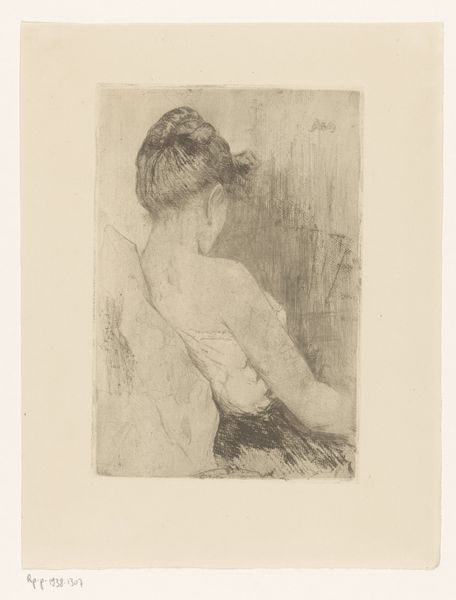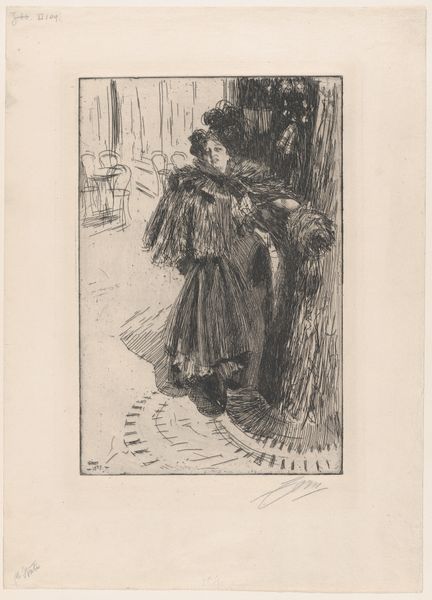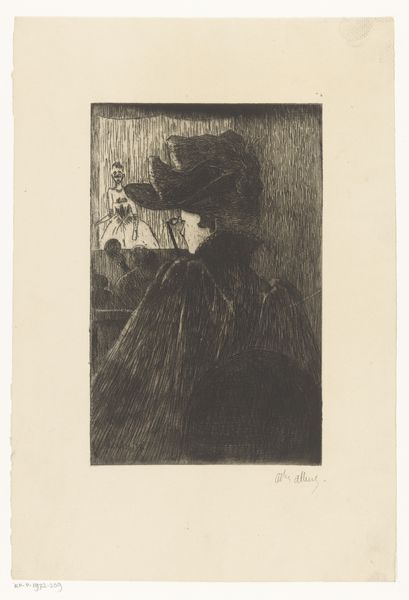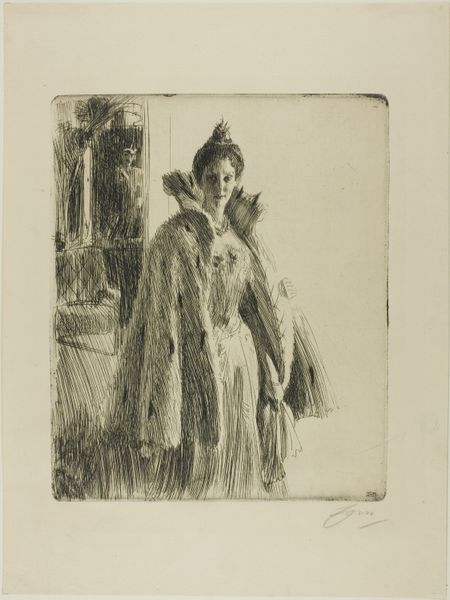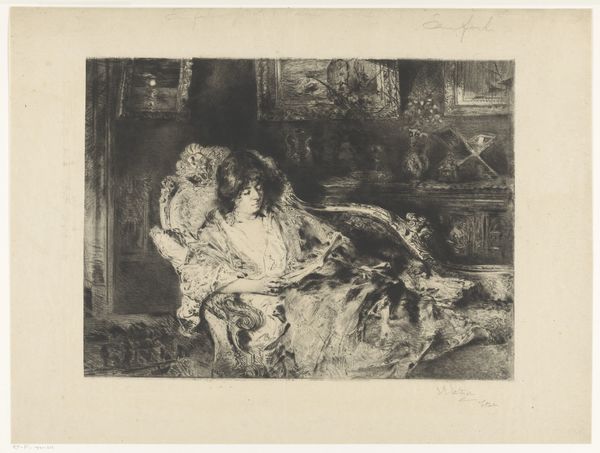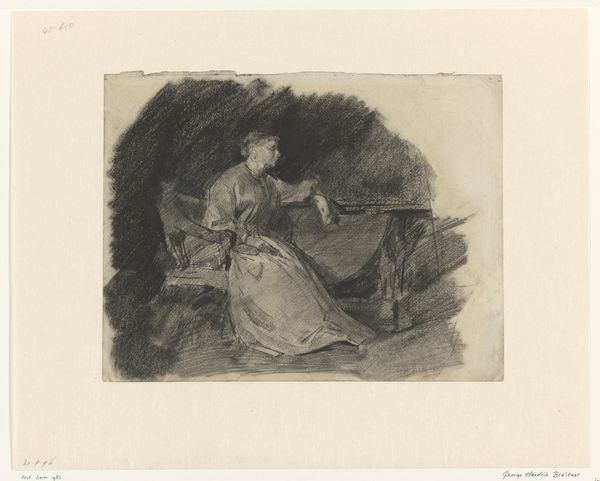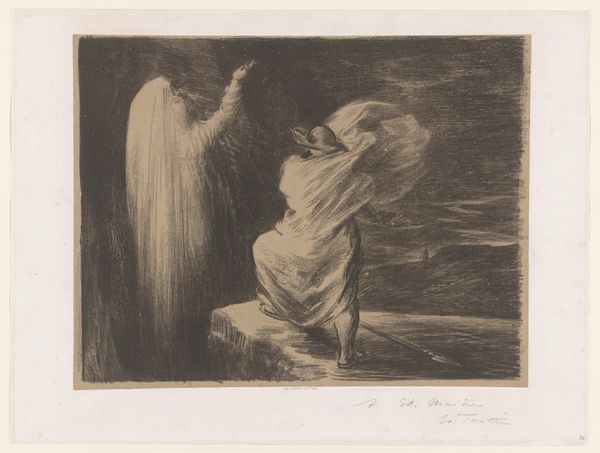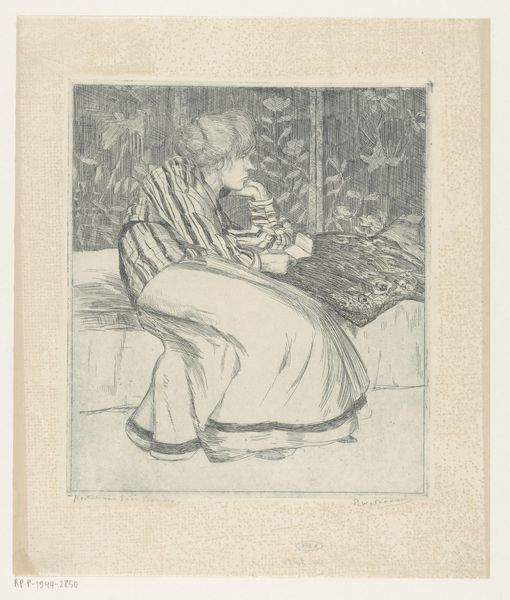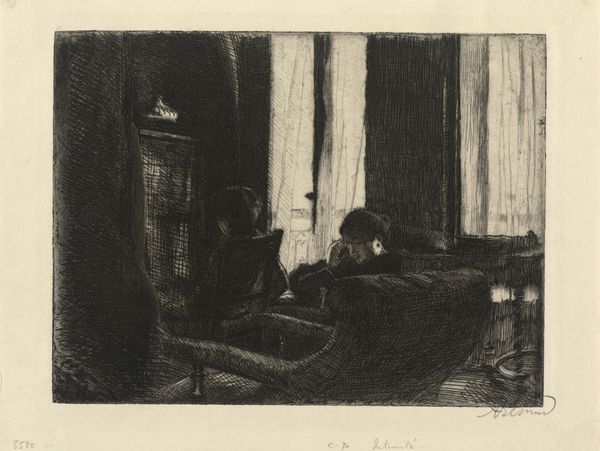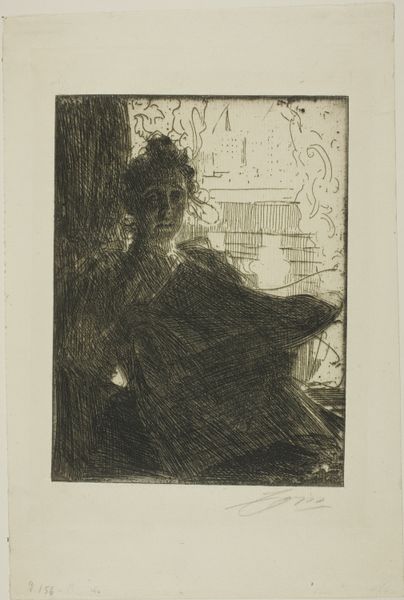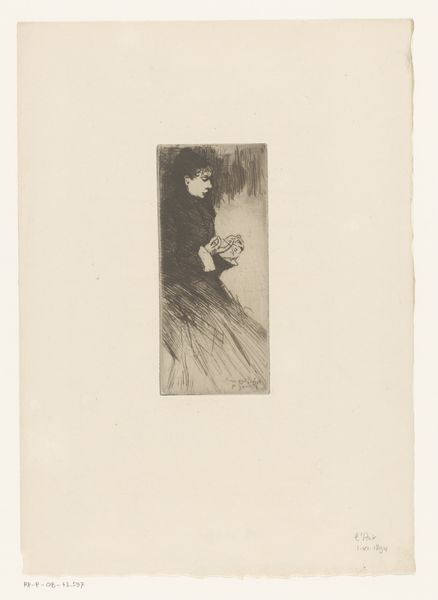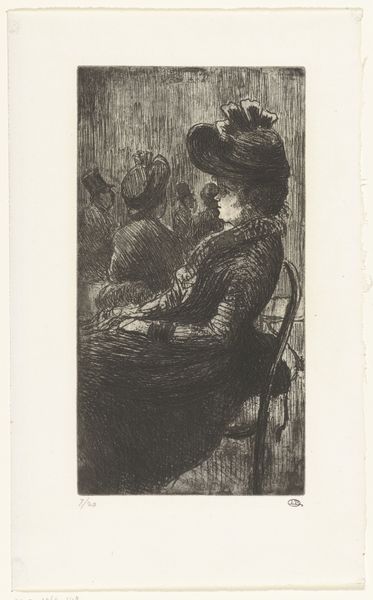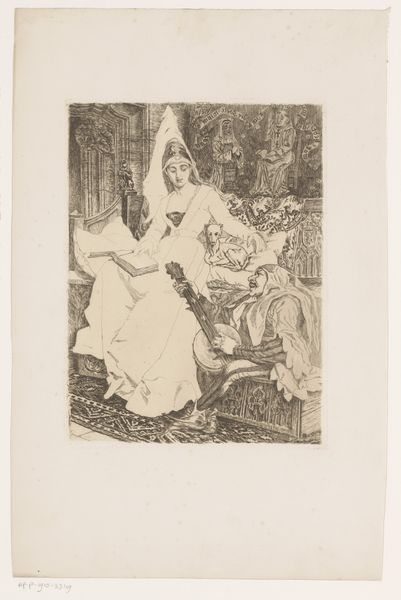
drawing, print, etching
#
portrait
#
drawing
# print
#
impressionism
#
etching
#
figuration
#
pencil drawing
#
genre-painting
#
realism
#
monochrome
Dimensions: height 108 mm, width 165 mm
Copyright: Rijks Museum: Open Domain
Editor: We're looking at Willem de Zwart's "Liggende vrouw," created around 1886. It's an etching, giving it a very textured, almost grainy quality. The figure reclines in shadow, a hand raised. It feels melancholic and intimate. What strikes you most about this piece? Curator: The pose and the medium both speak to a fascinating cultural moment. The late 19th century witnessed increasing artistic interest in interiority and psychological states, as the burgeoning middle class carved out private lives increasingly separate from the public sphere. Etchings, unlike larger academic paintings, were readily reproducible and disseminated, bringing intimate glimpses into private life to a wider audience. How does this smaller, reproducible format change our viewing experience? Editor: I guess it feels less grand or imposing, more like a stolen glance. Was this domestic scene considered appropriate subject matter at the time, or was there some controversy? Curator: Domesticity was both a celebrated and contested subject. On the one hand, depictions of tranquil home life reinforced ideals of family and female virtue. On the other hand, images suggesting female leisure or even, dare I say, ennui, could provoke anxieties about social order. Does this figure appear idle or restful to you? Editor: I can see both. Her hand is raised, as if interrupting something, yet her body seems relaxed. The ambiguity is interesting. Curator: Indeed. De Zwart here engages with that tension, subtly questioning the idealized domestic sphere by hinting at other potential emotional landscapes. The politics of imagery often reside in those ambiguities. Editor: That's a different way to consider how art represents people and cultures. Thank you, that's given me so much to think about! Curator: My pleasure. Examining art through its social context really illuminates how it participates in broader cultural conversations.
Comments
No comments
Be the first to comment and join the conversation on the ultimate creative platform.
